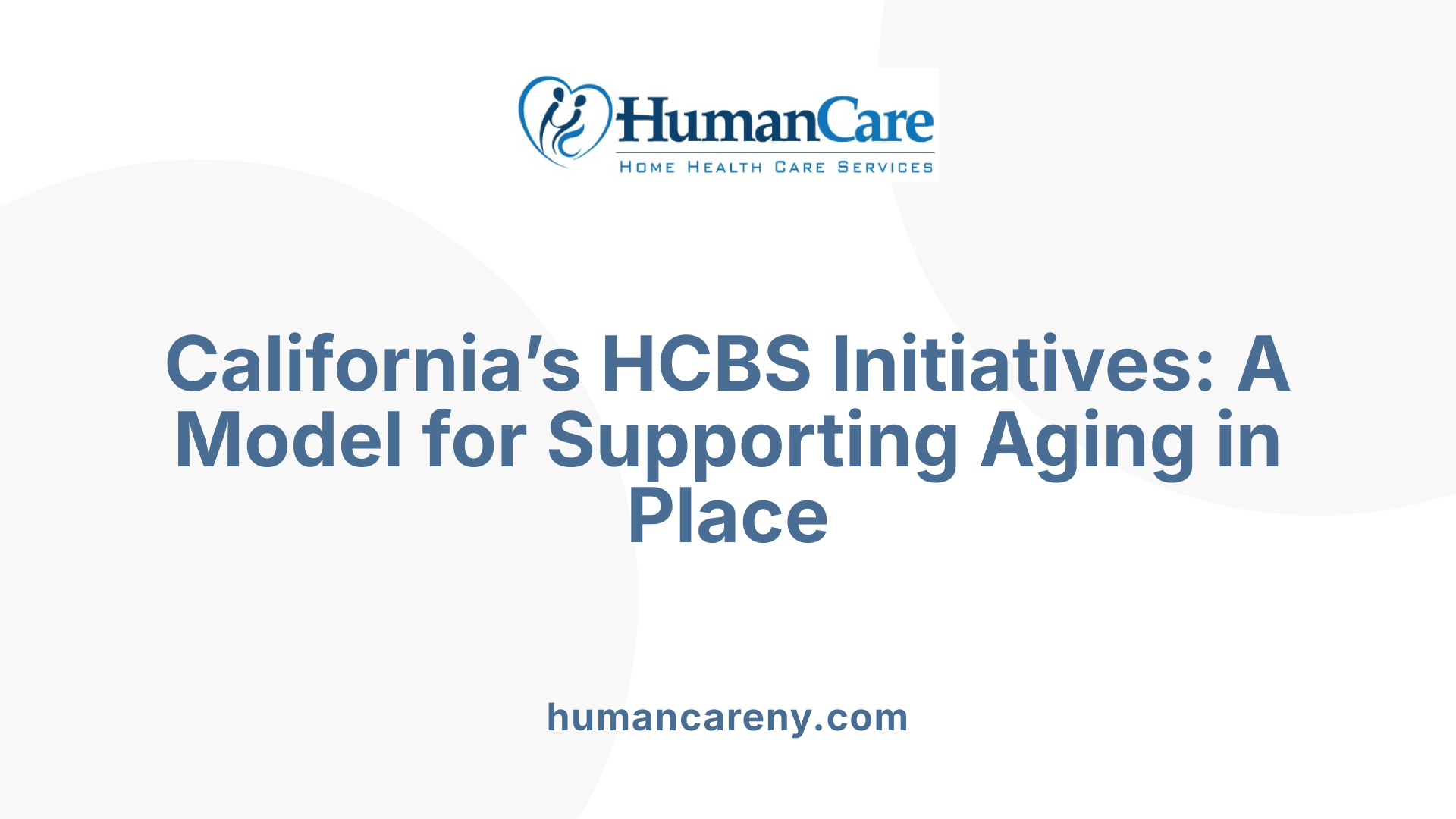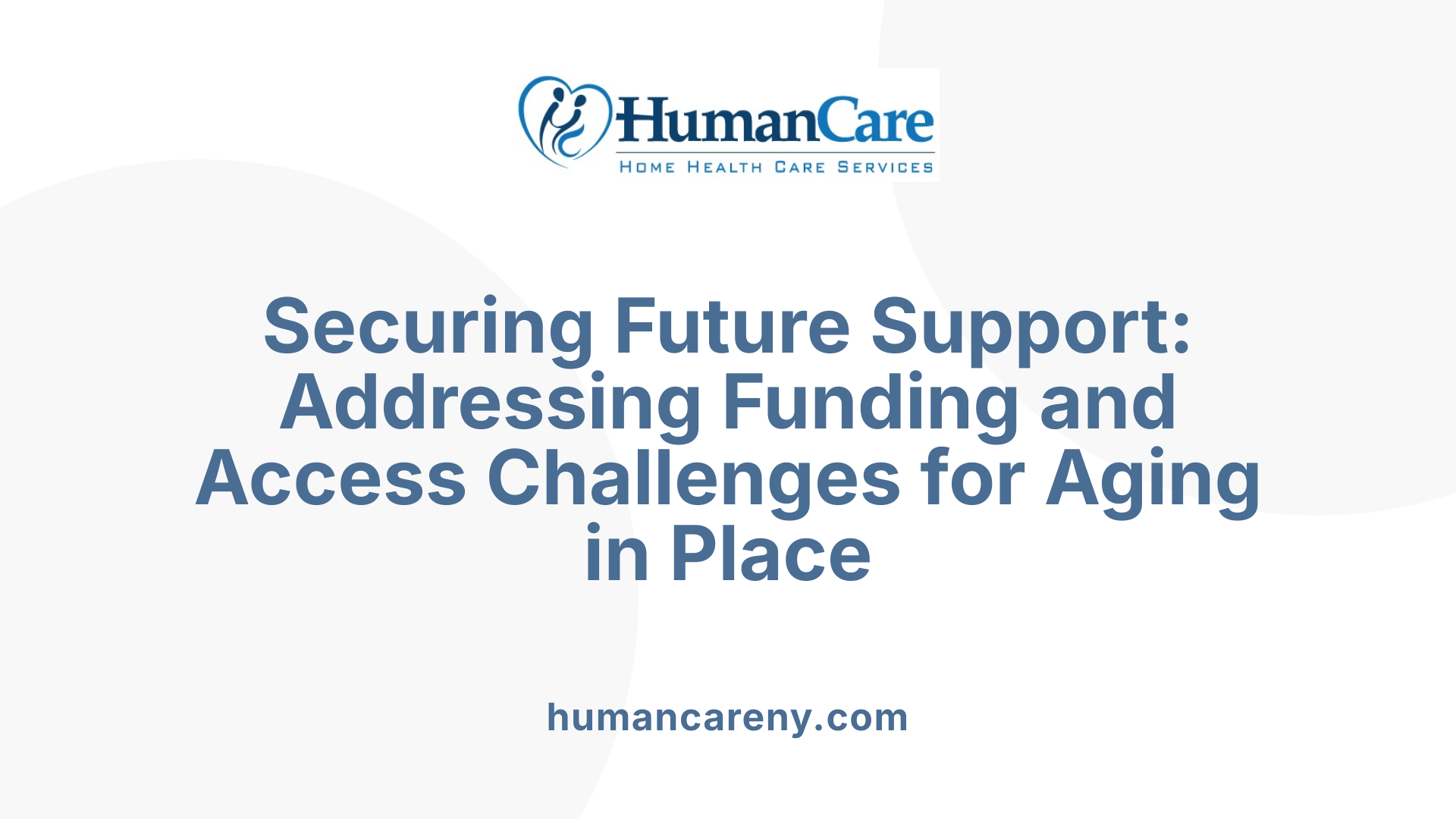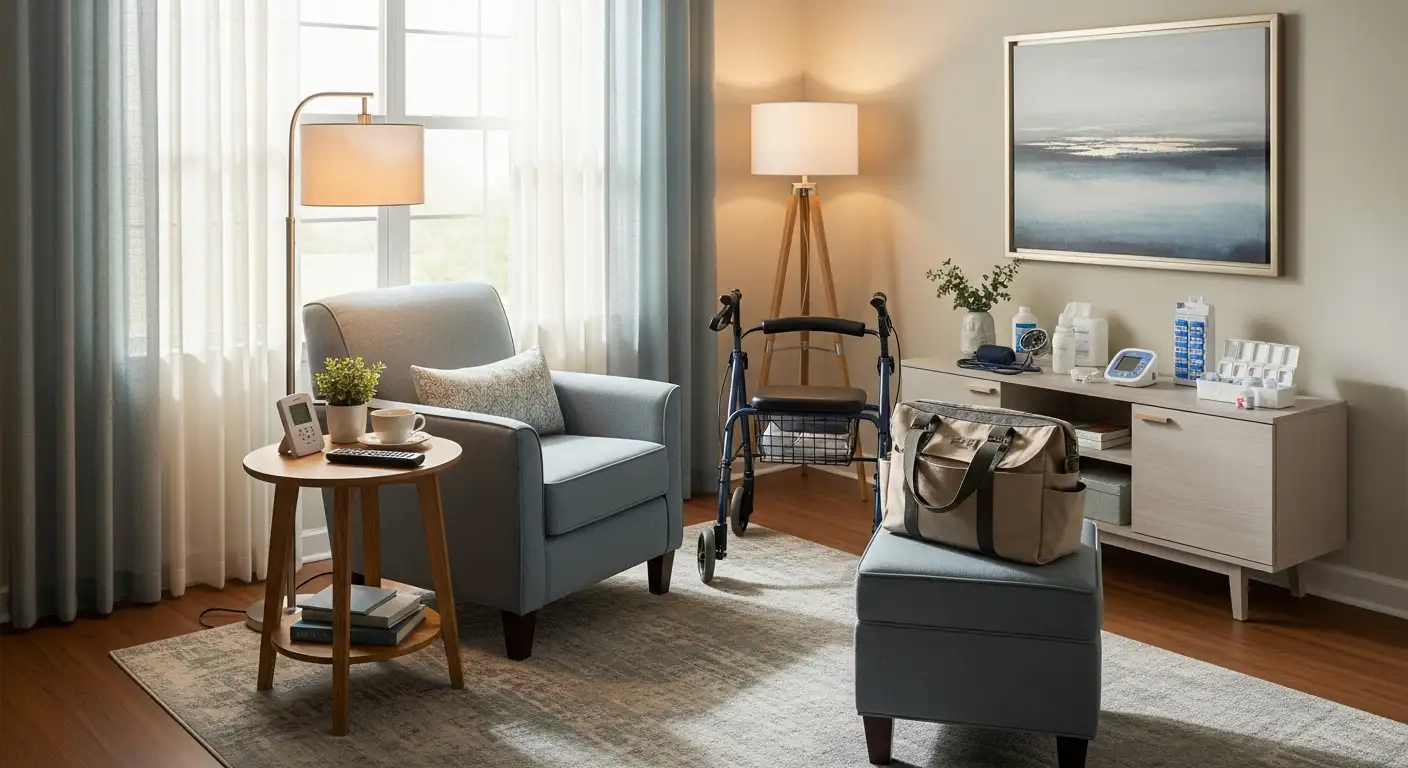Understanding Medicaid Waivers and Aging in Place
As the population ages, supporting older adults in living independently at home has become a primary goal across the United States. Medicaid waiver programs play a crucial role in enabling this vision by subsidizing comprehensive home and community-based services. This article explores how these waivers impact the quality of life, health outcomes, and cost-efficiency of elderly care, especially focusing on their growing importance in states like California.
Medicaid Aging Waiver Programs: A Foundation for Aging in Place
What Are Medicaid Aging Waiver Programs?
Medicaid Aging Waiver programs (MAWs) are designed to subsidize long-term care for older adults, allowing them to remain in their homes or community settings rather than moving to nursing homes. These programs provide Home and Community-Based Services (HCBS), which include a variety of supports such as personal care, care coordination, and home modifications. The goal is to promote aging in place, improving quality of life while managing costs.
How Have These Programs Expanded Since the 1980s?
Since their introduction in the 1980s, Medicaid Aging Waiver programs have expanded significantly. This growth reflects a response to the increasing demand for long-term care as the population ages. Instead of escalating government spending on expensive nursing home care, MAWs offer more affordable, community-based alternatives. States have adapted and expanded waiver programs over time to better meet these long-term care needs.
What Are the Primary Goals of MAW?
The central objectives of Medicaid Aging Waiver programs are to reduce reliance on costly nursing home care and enhance older adults’ overall well-being. By providing tailored home and community supports, these programs help seniors maintain independence and health. The availability of such services also fosters access to both paid and unpaid helpers as well as necessary healthcare services, contributing to improved physical and mental health outcomes among the elderly population.
Home and Community-Based Services: Scope and Variety
Range of services under HCBS
Home and Community-Based Services (HCBS) provide a comprehensive array of supports that extend well beyond traditional medical care. These services aim to assist individuals, especially the elderly and disabled, in maintaining independence and quality of life while living in their own homes or community settings. Examples include personal care assistance, help with daily activities, care coordination, medication management, and respite care for family caregivers.
Settings where HCBS are provided
HCBS can be delivered in multiple environments tailored to individual needs and preferences. These settings include private homes, adult day care centers, assisted living residences, memory care communities, foster care homes, and even family members' homes. The flexibility of settings supports the desire of most older adults, particularly in California, to age in place rather than move to institutional nursing facilities.
Examples of services beyond medical care
Beyond direct healthcare services, HCBS includes non-medical supports essential to daily living and independence. This involves assistance with activities of daily living such as bathing, dressing, and meal preparation. Home modifications are often funded to improve safety and accessibility, like installing grab bars or wheelchair ramps. Transportation services enable access to medical appointments and community resources, while case management and caregiver training ensure coordinated and effective care delivery.
The broad scope and adaptive settings of HCBS illustrate their vital role in supporting aging in place and reducing reliance on costly institutional care.
Health Outcomes Associated with Medicaid Waiver Program Expansion
How Does Medicaid Aging Waiver Spending Affect Health Outcomes?
Research indicates that increased spending on Medicaid Aging Waiver (MAW) programs leads to notable health improvements among older adults. Specifically, studies show that for each additional dollar spent per older person, there is a measurable enhancement in physical and mental health status.
What Are the Specific Health Improvements?
Key health benefits associated with expanded MAW funding include:
- A 1.4% decrease in older adults reporting poor health.
- A 1.5% reduction in mobility limitations, helping seniors move more freely.
- A 1.6% decrease in limitations related to Instrumental Activities of Daily Living (IADLs), such as managing finances or medication.
- A 1.7% improvement in mental health, indicated by reduced negative emotional feelings.
These outcomes collectively suggest that MAW services support better functional ability and emotional well-being among the elderly.
Does MAW Encourage Healthier Behaviors?
Yes, evidence also points to MAWs reducing negative health behaviors like smoking among older adults. By offering comprehensive Home and Community-Based Services (HCBS), MAW fosters environments where seniors receive assistance and resources that promote healthier lifestyles.
This combination of improved health status and behavioral changes emphasizes the role of Medicaid Aging Waivers in enhancing quality of life for aging populations while potentially reducing the need for more costly institutional care.
Support for Paid and Unpaid Caregivers

Increased Likelihood of Older Adults Receiving Help
The Medicaid Aging Waiver (MAW) program significantly boosts the chances that older adults will receive assistance through paid or unpaid helpers. By expanding access to Home and Community-Based Services (HCBS), MAW empowers older individuals to age in place with the personalized support they need.
Role of Family Caregivers and Challenges They Face
Family caregivers are a vital component of care for nearly 4.4 million elderly and disabled individuals in California. These unpaid caregivers often help with activities of daily living and other support services. However, many family caregivers experience financial strain, physical exhaustion, and mental health challenges due to the demands of caregiving.
Respite Care and Paid Assistance Available Through Waivers
To alleviate these burdens, MAW and other Medicaid waivers offer respite care and paid assistance programs. Respite care provides temporary relief for family caregivers, allowing them to rest and recharge. Paid assistance may include home personal care and supervision, helping ensure consistent support for older adults while supporting the well-being of both caregivers and care recipients.
This multifaceted caregiver support structure not only improves health outcomes for older adults but also sustains the vital informal care network that underpins effective long-term care at home.
Economic Implications: Cost Savings and Challenges
Comparative costs of home-based care versus nursing homes
Home and Community-Based Services (HCBS) funded through Medicaid waivers generally present a more cost-effective alternative to traditional nursing home care. Nursing homes incur higher expenses due to intensive clinical staffing and facility overhead, while HCBS supports individuals living in their homes or community settings. States like California have documented that cuts in HCBS spending paradoxically lead to higher overall costs because increased nursing home admissions become necessary, which are significantly more expensive.
Effects of HCBS funding cuts during economic downturns
During fiscal crises such as the 2009 recession and the COVID-19 pandemic, states including California have often reduced optional benefits like HCBS to manage budget shortfalls. These cuts disrupt access to essential home care services and shift the financial and caregiving burden onto families and more institutional care settings. Reduced HCBS funding undermines health outcomes for vulnerable older adults and disabled individuals, increasing the likelihood of adverse events and institutionalization.
Increased nursing home admissions resulting from reduced HCBS funding
Research shows that when HCBS expenditures decline by 15% to 45%, there is a notable rise in nursing home placements. This shift not only diminishes the quality of life for older adults who prefer to age in place but also causes state programs to bear higher costs associated with institutional care. The surge in nursing home admissions subsequently exacerbates systemic challenges and strains limited Medicaid resources.
Strategies states use to sustain and expand HCBS
To counter these challenges, states employ multiple approaches to maintain or grow HCBS capacity. These include augmenting Medi-Cal financing in California, reforming eligibility criteria to expedite access, expanding provider networks to serve underserved populations, and shortening waitlists for services. Such strategies aim to safeguard long-term savings by preventing costly institutionalization and improving well-being for older adults.
| Economic Aspect | Description | Impact |
|---|---|---|
| Cost comparison | HCBS less expensive than nursing homes | Savings for Medicaid and better quality of life for beneficiaries |
| Funding cuts in downturns | States often cut HCBS when facing budget constraints | Reduced service access and increased nursing home admissions |
| Nursing home admissions increase | Significant after HCBS cuts | Higher Medicaid expenditures and worse individual health outcomes |
| Sustaining HCBS | Revenue increase, eligibility reforms, provider expansion, waitlist reduction | Preserves HCBS availability, controls total Medicaid costs, supports aging in place |
California as a Case Study for Medicaid Waivers and HCBS

Role of Medi-Cal in funding HCBS
In California, Medi-Cal serves as the primary payer for Home and Community-Based Services (HCBS), supporting nearly one million older adults and disabled individuals living within the community. This crucial funding stream ensures that many seniors can receive long-term care without resorting to more costly institutional settings.
Specific programs like IHSS serving large elderly and disabled populations
One of the most significant state programs under Medi-Cal is the In-Home Supportive Services (IHSS). Serving over 800,000 elderly and disabled Californians, IHSS provides vital help with activities of daily living, such as personal care and household tasks. These services empower recipients to age safely and comfortably in their own homes.
Challenges related to funding, eligibility, and access
Despite progress, California faces ongoing challenges with HCBS funding and accessibility. Since HCBS are optional Medicaid benefits, states have discretion in their provision. During fiscal downturns, such as the 2009 recession and the COVID-19 pandemic, California experienced cuts or attempted reductions in HCBS funding. These cuts often lead to increased nursing home admissions and poorer outcomes, while driving up costs due to more expensive institutional care.
Eligibility barriers and limited provider networks also restrict access. Financial pressures and federal funding uncertainties compound these issues, often resulting in waiting lists and uneven service availability.
Progress and ongoing strategies for expansion
To address these challenges, California is actively pursuing strategies to expand HCBS access. Efforts include increasing revenue for Medi-Cal, reforming eligibility criteria, expanding provider networks, and reducing service waitlists. These measures reflect the state's commitment to supporting aging in place and decreasing reliance on costly nursing facilities. Continued progress will depend on sustainable funding and policies that prioritize community-based care options.
Medicaid Waivers Versus Regular Medicaid Entitlements: Eligibility and Service Differences

What Are the Differences Between Waiver Programs and Regular ABD Medicaid?
Medicaid waiver programs and regular ABD (Aged, Blind, and Disabled) Medicaid differ primarily in how they deliver Home and Community-Based Services (HCBS).
Waiver programs, such as the Medicaid Aging Waiver (MAW), are designed to provide flexible support tailored to prevent or delay nursing home placement. These programs give states discretion to offer a variety of services but are often subject to funding limits, leading to potential waiting lists.
In contrast, regular ABD Medicaid is an entitlement program. This means eligible individuals are guaranteed access to certain HCBS benefits without waiting, ensuring continuous support.
Are There Waiting Lists or Service Guarantees?
One critical distinction lies in service access. Waiver programs may face waiting lists due to capped enrollment and budgets. This can delay or restrict access for eligible participants, especially when demand is high.
On the other hand, regular ABD Medicaid programs provide guaranteed service access once eligibility is established, eliminating wait times for required supports.
Which Populations and Services Do They Cover?
Waiver programs typically target the elderly, frail, or disabled populations, offering a range of services such as:
- Assistive technology
- Attendant or personal care
- Case management
- Caregiver training
- Home modifications
- Transportation
- Respite care
Regular ABD Medicaid similarly covers many of these services but with guaranteed availability.
How Do Programs Vary by State?
Medicaid HCBS programs are state-specific with diverse waiver designs and eligibility criteria. States implement different waivers to address local needs and manage budgets. For example, California’s Medi-Cal Includes robust HCBS offerings such as personal care assistance, care coordination, and 24-hour nursing.
While waiver programs present flexibility, their optional nature means availability can fluctuate, especially during fiscal challenges.
| Aspect | Medicaid Waiver Programs | Regular ABD Medicaid Entitlement |
|---|---|---|
| Eligibility | Elderly, frail, disabled (targeted) | Elderly, blind, disabled (broader) |
| Service Guarantee | Subject to waiting lists and caps | Guaranteed access once eligible |
| Services Offered | Wide range including assistive tech & respite | Similar services, with guaranteed provision |
| State Variations | High; varies widely by state and waiver | State-specific but more uniform |
This comparison highlights how these Medicaid paths serve as vital frameworks offering supportive care to older adults and eligible populations, balancing flexibility with accessibility.
Future Outlook: Addressing Challenges to Sustain Aging in Place

How will fiscal threats from federal funding reductions impact HCBS?
Fiscal pressures loom over Medicaid Aging Waiver (MAW) programs and Home and Community-Based Services (HCBS) with anticipated federal funding cuts. Such reductions risk diminishing service availability, forcing states like California to reconsider support levels. Historical precedents during economic downturns reinforce that cutting HCBS leads to greater long-term costs by increasing nursing home admissions and worsening health outcomes among older adults.
What measures are being considered to increase revenue and reform eligibility?
To counter funding constraints, California is exploring strategies to boost Medi-Cal revenues and reform eligibility criteria. These efforts aim to widen access while maintaining program sustainability. Enhancements could involve refining income and asset thresholds for program entry, which may allow more older adults and disabled persons to benefit without overwhelming system capacity.
How can expanding provider networks and reducing waitlists help?
Expanding provider networks is critical to meeting growing demand for HCBS. By attracting more qualified caregivers and agencies, states can lower wait times that currently hinder access. Shorter waitlists will enable timely support, reducing hospitalizations and institutionalization risks among seniors.
What steps are needed to ensure equitable access and improve outcomes for older adults?
Ensuring equity involves addressing disparities across communities and demographic groups. Improving data-driven allocation of resources and culturally competent care can enhance service quality and satisfaction. Ultimately, sustaining and optimizing MAW and HCBS programs will promote aging in place, preserving dignity and health for older Californians.
Sustaining the Promise of Aging in Place Through Medicaid Waivers
Medicaid waiver programs, particularly those supporting Home and Community-Based Services, are indispensable in helping older adults live with dignity and independence in their own homes and communities. The positive health outcomes, caregiver support, and cost efficiencies demonstrated underscore the value of these programs. However, their future success depends on addressing fiscal challenges and expanding access. Investing in and innovating these programs will remain paramount as the nation navigates the complexities of an aging population and strives to meet their preferences for aging in place.



